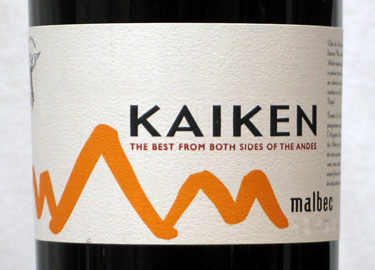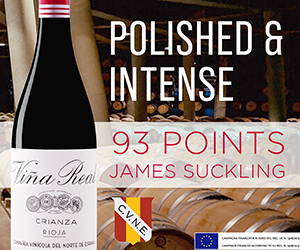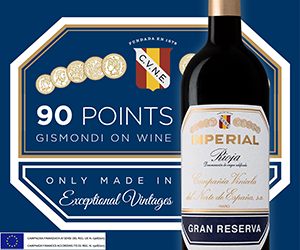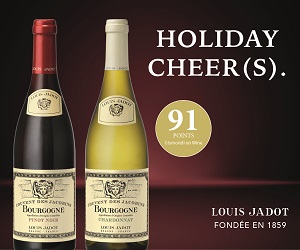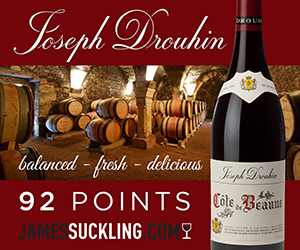Just as Eva Peron, the First lady of Argentina from 1946 to 1952 catapulted herself from rags to riches, so too have the wines of South America's second largest country.
Argentine wine sales are up nearly 40 per cent in North American markets and they are growing in a tough economy.
Argentina has done a lot of things right over the last decade reshaping its wine industry from the vineyard up. In a business known for its dreamers and artists, the Argentinos have worked extremely hard to produce wines whose quality over-delivers for the price.
Looking around the world today they appear to be well-placed to take advantage of the current economic downturn by maintaining their regular fan base while catching a portion of wealthy drinkers trading down from the $40-$50 range to the $15 to $20 range. The incredible value may not be so obvious in B.C. where our import wine tax is crushing, but trust me, in Alberta and Ontario and most of the United States, Argentine wine prices are super attractive.
Argentina's success stems from a number of factors including sophisticated water management, high altitude, old vine vineyards, incredibly poor soils and an impressive array of grapes that have adapted to its peculiar environment. More than anything the current flavours of Argentina's reds wines seemed to resonates with the new North American palate. Add to that attractive pricing and you have a recipe for success.
Returning from 10 days in Mendoza, including three as a judge at the 2009 Wines of Argentina competition, it's easy to suggest things will only get better for Argentina.
The world's fifth largest wine producer now boasts 1322 wineries and vineyard area totalling 558,000 acres. Compare that to B.C.'s total of roughly 7500 acres in the ground and you begin see the potential of this giant producer.
Malbec is on everyone's lips and with 22 different clones and myriad growing zones at all altitudes the future for this sweet soft red with intense colour is as bright as its flavours. Back in 1990 the bonarda grape was the most widely planted variety in Argentina followed by malbec and cabernet. Today malbec is comfortably in the lead and bonarda is about to be passed by Argentina's secret weapon cabernet sauvignon. Based on my tastings I could see this variety becoming even as important as malbec in the coming decade.
For now, if there are any worries it is the rising levels of alcohol and the use of too much new oak. Both are natural results of modern winemaking but they can and should be can be tamed. It takes vision and guts to go to the market with fresh wines offering fruit and complexity as opposed to chocolate and coffee and alcohol rates of 15 and 16 per cent, but it is possible.
Today we look six malbec labels that speak to the new world of Argentine wines. Each is well worth investigating.
Much like the previous version the Kaiken Malbec 2006 is packed with savoury, sweet malbec fruit etched with licorice, chocolate, black fruits and spice. The textures are glossy, the styling sleek. Great value. Chilean master winemaker Aurelio Montes travels from his native Chile to Argentina and a back regularly to make this wine, hence the "Kaiken" moniker, named after the wild goose that flies back and forth over the Andes between Chile and Argentina.
Big smooth, rich, and brimming with ripe fruit describes Doña Paula Malbec 2007 from Luján de Cuyo. The palate mixes plums, licorice and fresh crushed black pepper with a strong savoury lead pencil note that finishes smooth and dry with an aftertaste of coffee mocha. It's bang on varietal.
Organic fans will enjoy the option of Jean Bousquet Malbec (Organic Grapes) 2007 from Tupungato. The palate is round and full with light, chunky tannins with black cherry, pepper, savoury, licorice, mineral, light vanilla, herbal, mocha flavours. A bit cool but with fine fruit and balance. Solid value.
Terrazas de los Andes Malbec Reserva 2006 follows the smoky, roasted mushroom, black cherry, saddle leather theme. The palate is supple with light tannins and bright acidity. Black cherry, plum, peppery, savoury, tobacco, leather, chocolate, earthy, mineral flavours. Good solid malbec with some finesse for near term consumption.
The Famiglia Bianchi Malbec 2005 hails from San Rafael in the Southern part of Mendoza. Look for a crazy smooth, rich, powerful aromas and flavours of coffee, black cherries plums and spicy, savoury tobacco. The finish is long and warm but balanced with flecks of orange and black liquorice that keep calling you back to the glass. More of a new World Style versus Euro but should have plenty of fans.
Finally the Pascual Toso Malbec 2007 comes with bags of sweet black fruit wrapped in liquorice with just a touch of acidity and pepper poking through on the back end. Big spearmint menthol palate with warm dark fruit peppery finish. A big showy red for the money. Bring on the steaks.
MALBEC MANIA
KAIKEN MALBEC 2006, MENDOZA, ARGENTINA
Price $19
UPC 715126550012
Score 89/100
Remarks Savoury, sweet malbec fruit, etched with licorice, chocolate, and spice.
DOÑA PAULA MALBEC 2007, LUJÁN DE CUYO, MENDOZA, ARGENTINA
Price $22
UPC 836950000056
Score 88/100
Remarks Big smooth rich red brimming with ripe fruit and fresh crushed black pepper.
JEAN BOUSQUET MALBEC (ORGANIC GRAPES) 2007, TUPUNGATO, MENDOZA, ARGENTINA
Price $16
UPC 0879716000013
Score 88/100
Remarks Black cherry, peppery, savoury, cool liquorice style. Solid value.
TERRAZAS DE LOS ANDES MALBEC RESERVA 2006, MENDOZA, ARGENTINA
Price $24
UPC 07790975001487
Score 88/100
Remarks Solid malbec with some finesse for near term consumption.
FAMIGLIA BIANCHI MALBEC 2005, SAN RAFAEL, MENDOZA, ARGENTINA
Price $20
UPC 7790703167645
Score 89/100
Remarks More of a new World Style versus Euro but should have plenty of fans.
PASCUAL TOSO MALBEC 2007, MAIPÚ, MENDOZA, ARGENTINA
Price $14
UPC 718742000058
Score 86/100
Remarks A big showy red for the money. Bring on the steaks.

 quicksearch
quicksearch

